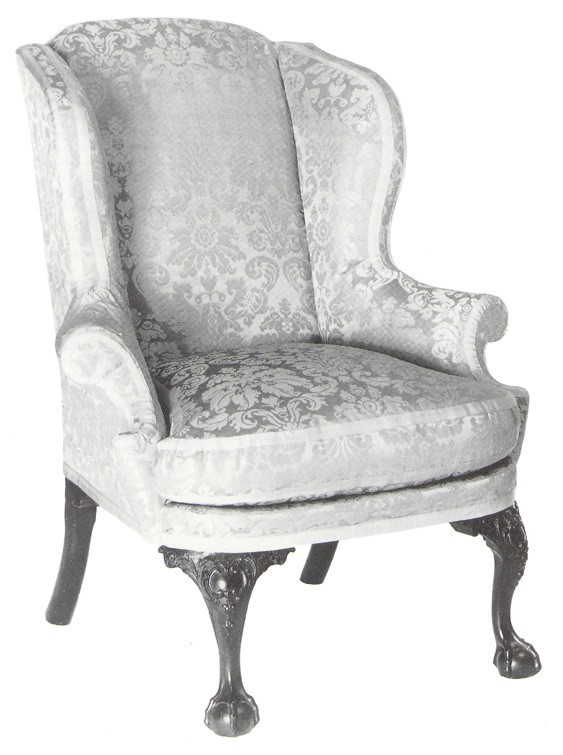
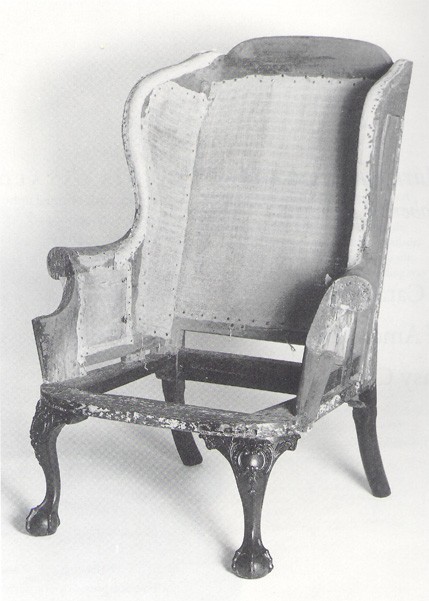
Easy chair illustrated in fig. 1 with the original curled horsehair stuffing removed to expose the sackcloth and edge rolls. (Photo, Winterthur Museum.)
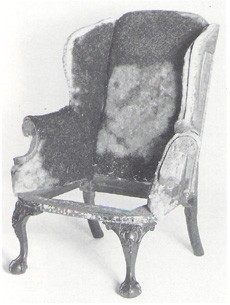
Easy chair illustrated in fig. 1 with the original stuffing in place. (Photo, Winterthur Museum.)
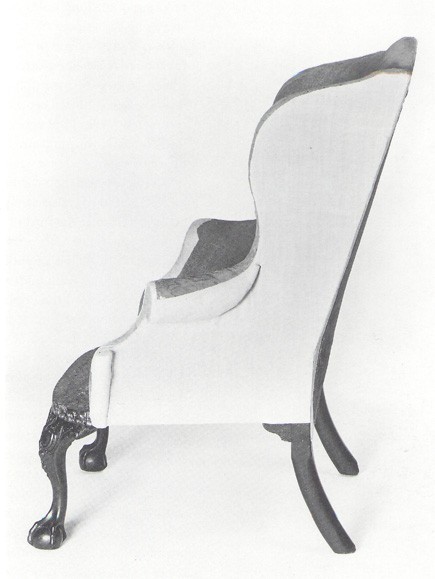
Side view of fig. 1 after conservation and addition of the missing outside covers. Note the line of the seam running down the wing and along the upper arm scroll. (Photo, Winterthur Museum.)
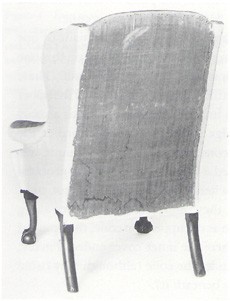
Rear view of fig. 1 after conservation and lining of the original outer back. (Photo, Winterthur Museum.)
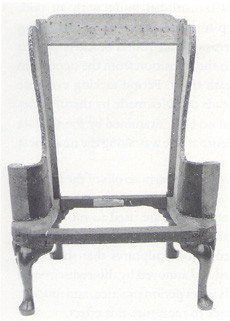
Easy chair, England or Ireland, 1730-1760. Walnut with oak. H. 46", W. 36", D. 27 11 (at seat). (Private collection; photo, John Bly.)
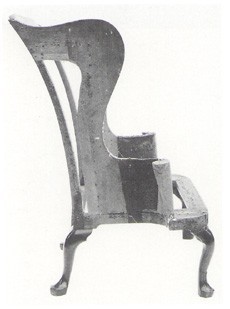
Side view of fig. 6. (Private collection; photo, John Bly.)
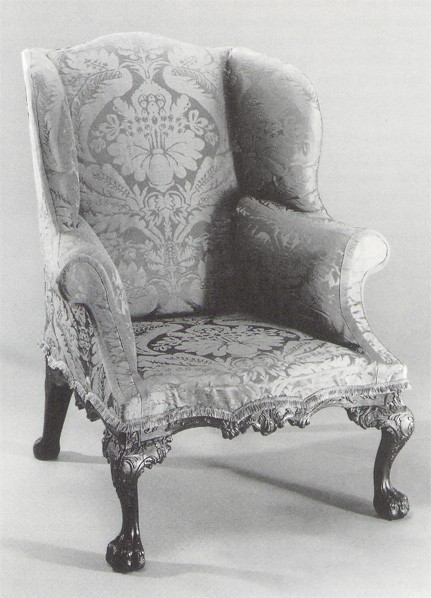
Easy chair made by Thomas Affleck with carving attributed to Nicholas Bernard and Martin Jugiez, Philadelphia, 1770. Mahogany with white oak, yellow pine, and tulip popllar. H. 45", W 36 1/2", D. 34". (H. Richard Dietrich, Jr., on loan to the Philadelphia Museum of Art; photo, Metropolitan Museum of Art.)
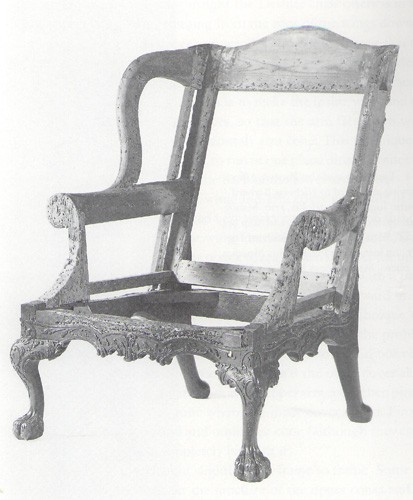
Frame of the easy chair illustrated in fig. 8. (Photo, Winterthur Museum.)
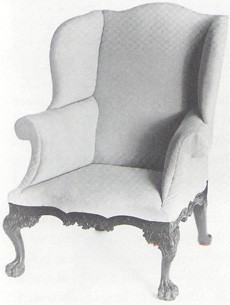
Nonintrusive upholstery foundation fabricated for fig. 8. (Photo, Winterthur Museum.)
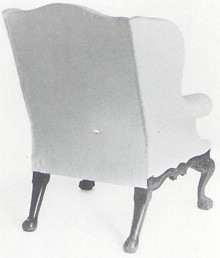
Rear view of fig. 8 showing the jog in the upholstery line at the bottom of the outside back. (Photo, Winterthur Museum.)
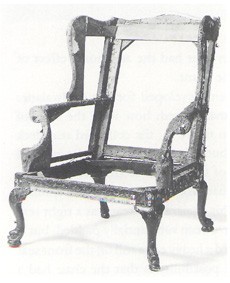
Easy chair, England, 1750—1770. Mahogany with Scots pine and ash. H. 41", W. 30", D. 33". (Private collection; photo by owner.)
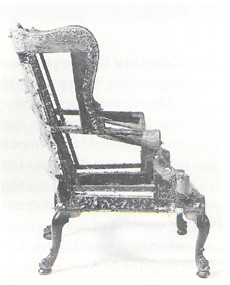
Side view of fig. 12 showing the arm and scroll construction. (Private collection; photo by owner.)
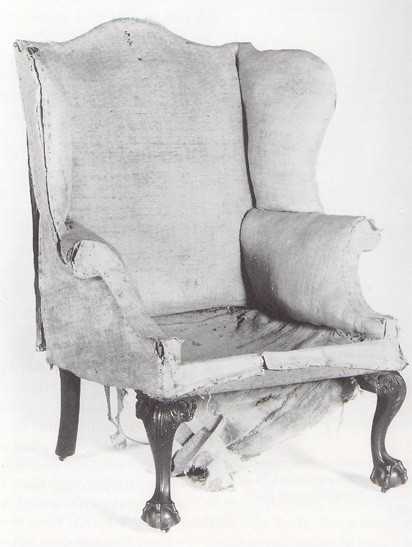
Easy chair, Philadelphia, 1770—1790. Mahogany with walnut, tulip poplar, red gum, yellow pine, oak, and possibly white pine and maple. H. 46 3/8", W. 36 1/4", D. 29 1/2". (Courtesy, Winterthur Museum, acc. 92.31.)
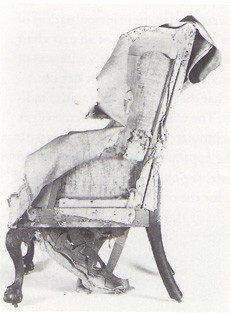
Side view of fig. 14. (Photo, Winterthur Museum.)
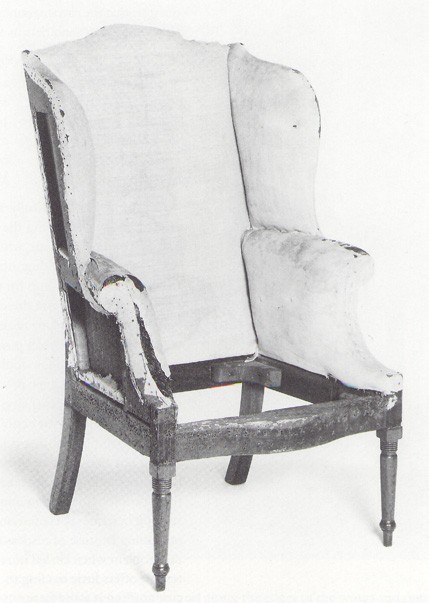
Easy chair, Philadelphia, 1795—1805. Mahogany with tulip poplar and pine. H. 43 3/4", W. 30 3/4", D. 31". (Courtesy, Winterthur Museum, acc. 91.37.)
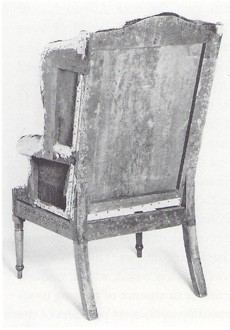
Rear view of fig. 16. (Photo, Winterthur Museum.)
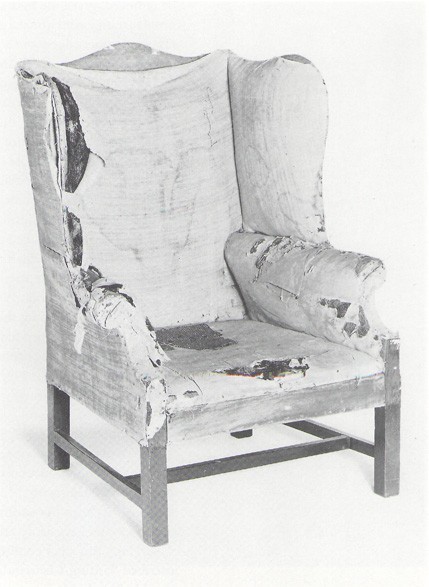
Easy chair, eastern Pennsylvania or Winchester, Virginia, 1790—1800. Mahogany with tulip poplar, maple, and white pine. H. 43 5/8", W. 33", D. 30 7/8". (Courtesy, Winterthur Museum, acc. 91.44.)
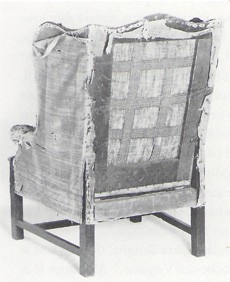
Rear view of fig. 18. (Photo, Winterthur Museum.)
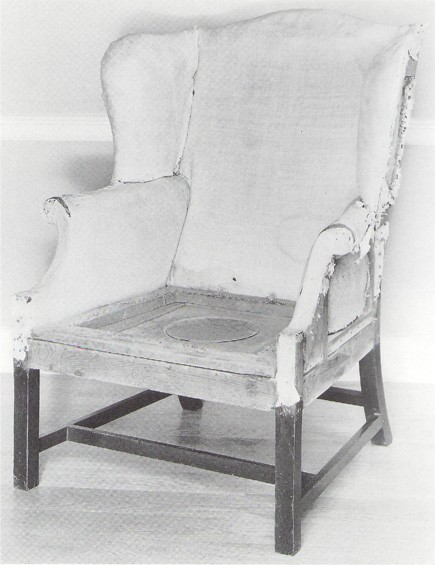
Easy chair, probably Pennsylvania, but possibly New York, 1795—1805. Mahogany with oak and pine. H. 45 7/8", W. 32 5/8", D. 32 5/8". (Courtesy, Bernard & S. Dean Levy; photo, Helga Studio.)
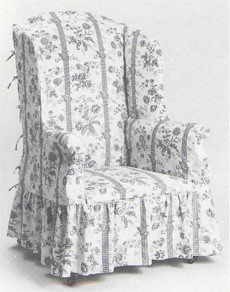
Easy chair, New York, New York, 1810—1825. Mahogany with ash and pine. H. 48 1/2", W. 31 1/2", D. 30". (Courtesy, Winterthur Museum, acc. 88.37.)
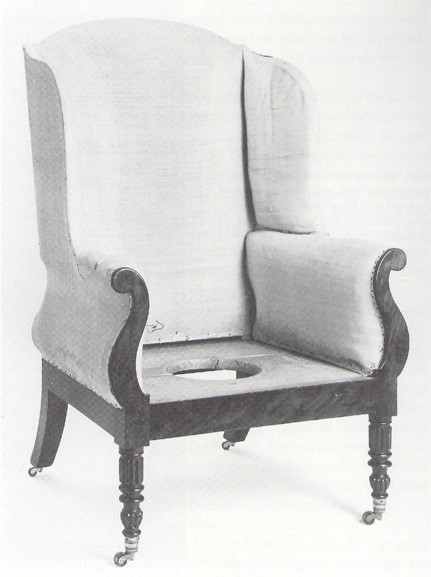
Front view of fig. 21 showing the original top linen. (Photo, Winterthur Museum.)
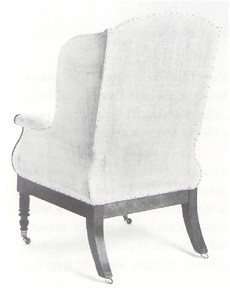
Rear view, of fig. 21 showing the outside back top linen. (Photo, Winterthur Museum.)
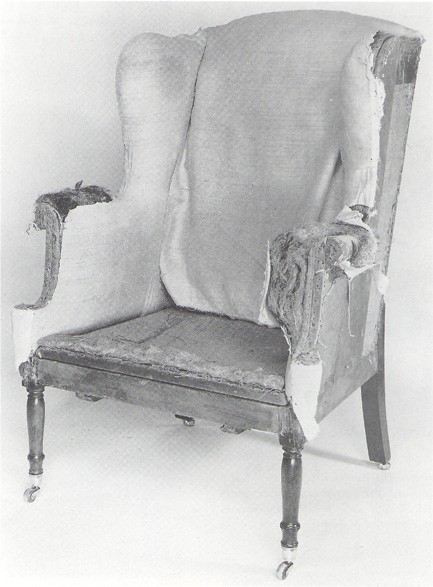
Easy chair, New York, New York, 1795—1810. Mahogany with maple, tulip poplar, and pine. H. 46 1/4", W. 31", D. 22 1/2". (Courtesy, Bernard & S. Dean Levy; photo, Helga Studio.)
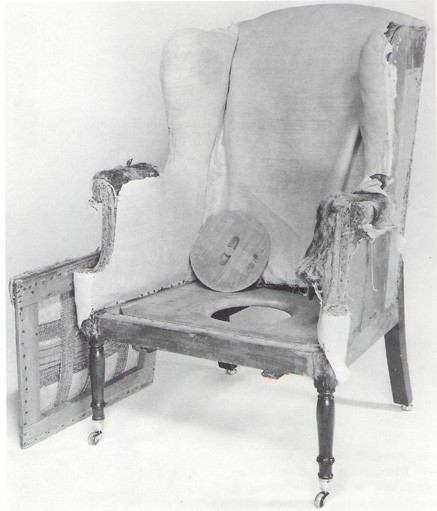
Easy chair illustrated in fig. 24 with the slip seat and stopper visible. (Courtesy, Bernard & S. Dean Levy; photo, Helga Studio.)
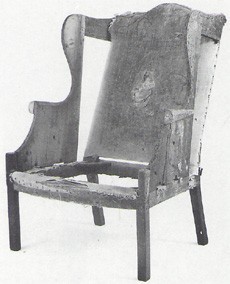
Easy chair, New York or New Jersey, 1810—1830. Walnut with cherry and maple. H. 45 1/2", W. 33 1/4, D. 38 1/2". (Private collection; photo, Winterthur Museum.)
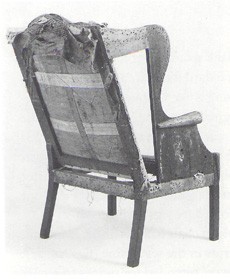
Rear view of fig. 26. (Photo, Winterthur Museum.)
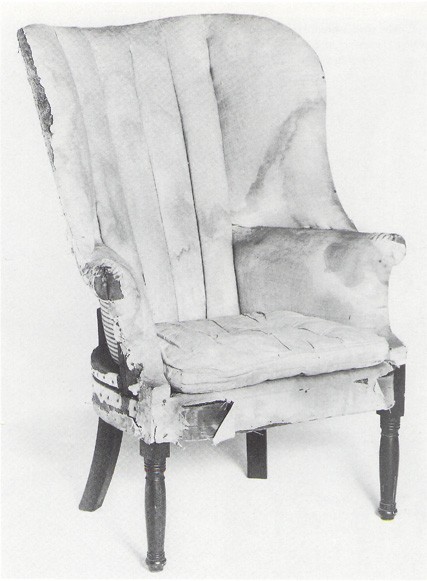
Circular easy chair, Philadelphia, 1805—1815. Mahogany with maple, cherry, and pine. H. 46", W. 34", D. 34". (Courtesy, Winterthur Museum, acc. 91.36.)
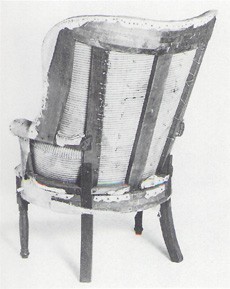
Rear view of fig. 28. (Photo, Winterthur Museum.)
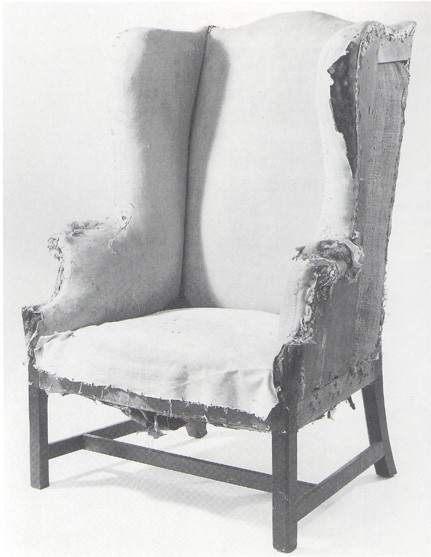
Easy chair, eastern Massachusetts or coastal New Hampshire, 1820—1840. Mahogany with maple, cherry, tulip poplar, pine, and ash. H. 49 1/4", W. 33", D. 28". (Private collection; photo, Alexander Studio.)
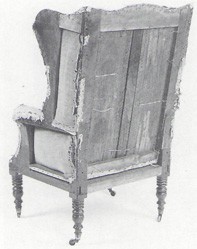
Rear view of fig. 30. (Photo, Alexander Studio.)
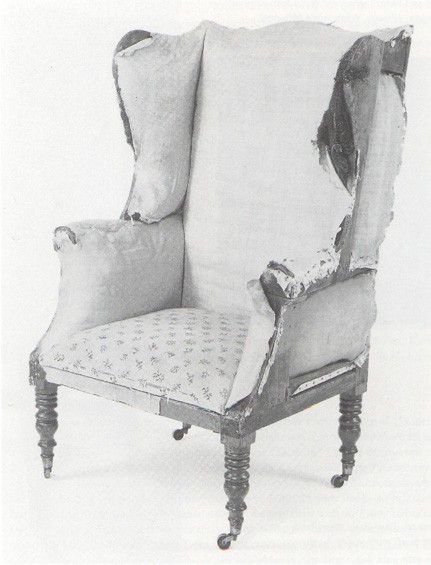
Easy chair, New York, 1800—1825. Mahogany with ash and white pine. H. .49", W. 32 1/2", D. 26 1/2". (Private collection; photo, Winterthur Museum.)
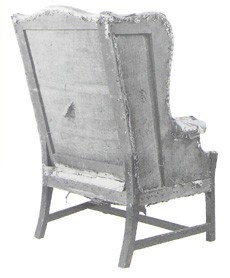
Rear view of fig. 32. (Photo, Winterthur Museum.)
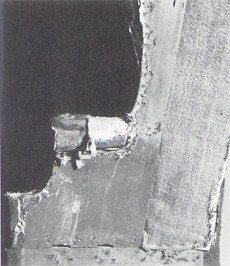
Detail of fig. 32, showing drilled holes and twines along the outer lead edge of the wing. (Photo, Winterthur Museum.)
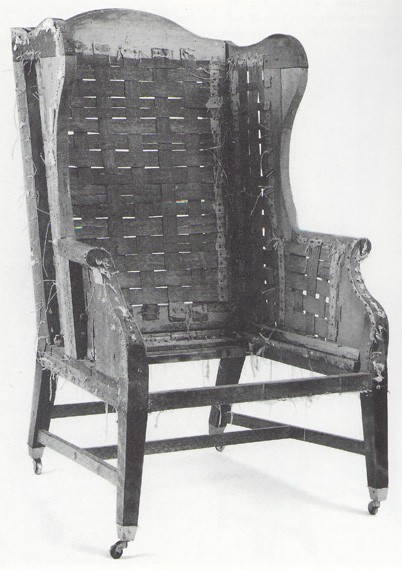
Easy chair, New Jersey, 1820—1840. Curly birch with maple, basswood, pine, and black ash (later oak stretchers). H. 48 1/8", W. 32", D. 29 3/8". (Private collection; photo, Winterthur Museum.)
